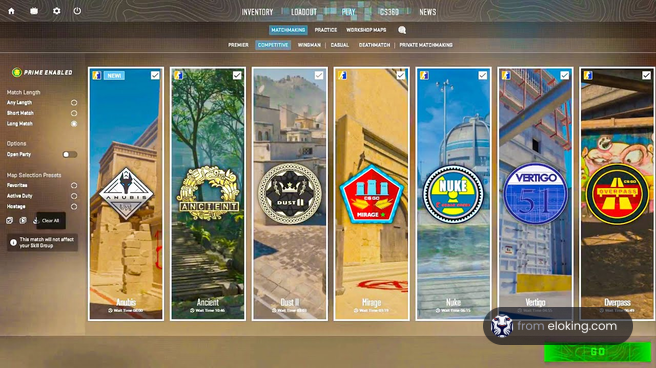Benzix News Hub
Stay updated with the latest news, trends, and insights.
Navigating CS2: Becoming a Map Whisperer
Unlock the secrets of CS2 maps! Master strategies, tips, and tricks to elevate your gameplay and become a true map whisperer.
Top 5 Strategies for Mastering Map Awareness in CS2
Mastering map awareness in CS2 is crucial for success in competitive gameplay. One of the top strategies is to utilize your minimap effectively. Always keep an eye on the minimap to track the positions of your teammates and potential enemy engagements. Understanding the key areas of maps can help you to predict movements and set up ambushes. Make it a habit to glance at the minimap every few seconds, especially after you've eliminated an enemy or heard gunfire nearby.
Another essential strategy is to communicate with your team. Use voice or text chat to relay important information regarding enemy locations or when you're moving into a new area. For example, if you spot an enemy lurking in a corner, quickly inform your teammates, enabling them to take advantage of the information. Remember, effective teamwork relies on strong communication, and being proactive with map awareness can make the difference between winning and losing in CS2.

Counter-Strike is a highly competitive first-person shooter that has been a staple in the gaming community for many years. Players can enhance their gameplay by mastering techniques like the jump throw bind cs2, which allows for more precise grenade throws. The game features a variety of maps and modes, each demanding skill and strategy from its players.
Understanding Map Callouts: Enhance Your Team Communication
Understanding Map Callouts is essential for improving team communication, as they serve as visual aids that help convey important information quickly and effectively. Map callouts allow teams to pinpoint specific locations, directions, or points of interest on a map, making it easier to discuss strategy, logistics, or project updates. By integrating map callouts into your communication process, you can streamline discussions and ensure that everyone is on the same page, reducing the likelihood of misunderstandings or errors.
To enhance your team's communication through map callouts, consider implementing the following strategies:
- Choose the Right Tools: Utilize software or applications that offer intuitive map callout features.
- Be Clear and Concise: When creating callouts, ensure that the information is straightforward and easily understandable.
- Encourage Feedback: Ask team members to share their thoughts on the clarity and utility of the callouts.
How to Analyze and Adapt to Different CS2 Maps for Success
Analyzing different CS2 maps is essential for improving your gameplay and adapting strategies effectively. Each map presents its unique layout, choke points, and hiding spots that can significantly influence match outcomes. Start by familiarizing yourself with the map's geography. Use resources like detailed map guides or community walkthrough videos that highlight critical areas, commonly used paths, and tactical advantages. Additionally, consider using tools like demo reviews to study previous games, identifying where mistakes were made or where opportunities for ambushes arose. This holistic understanding will help you formulate strategies that align with the specific map dynamics.
Once you have a solid grasp on the layout, the next step is to adapt your playstyle accordingly. Each map in CS2 requires different team compositions and strategies. For instance, on tightly packed maps, opt for guerrilla tactics that exploit close-range engagements, while more open maps may necessitate snipers or long-range weapons. Implement regular discussions with your team members to reassess your tactics based on map choice. Use feedback loops, such as post-game analyses, to ensure every player understands their role and the optimal strategies. By investing time in both analysis and adaptation, you'll significantly increase your chances of success on any CS2 map.